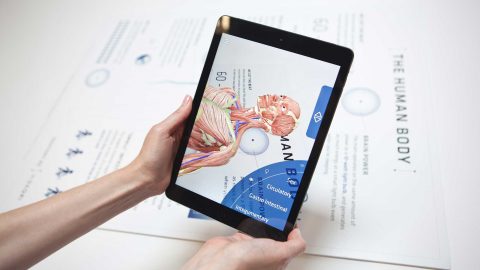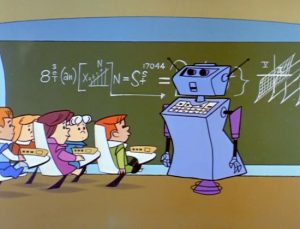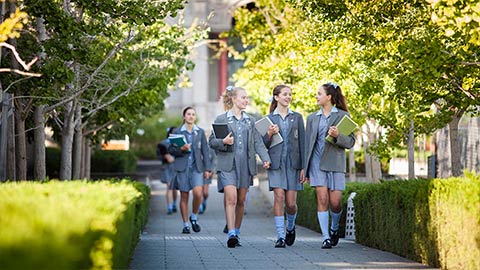From the Head of Digital Learning and Practice

For many, the pace of technological change in all aspects of our lives can be overwhelming. Not a day goes by without news articles discussing the advances in Artificial Intelligence, self-driving cars or other miraculous new technologies. Once the stuff of science fiction are now forecast to change our lives dramatically in the very near future.
In my role as Head of Digital Learning at St Catherine’s, my priority is to build upon our well-established academic traditions, whilst ensuring suitable new technologies are incorporated into our pedagogy and organisational practices.
 Technology is evolving at an ever-increasing rate and whilst it is vital to evaluate what new digital technologies could bring to the 21st Century classroom the challenge is to ensure we only adopt those technologies that will make a positive difference to the School. Careful evaluation is required before we adopt new ways of doing things so we do not fall into the trap of adopting technology for its own sake. It is important to recognise not all advances have a place in the classroom (even if they are incredibly shiny and new). Fear not, we are not planning to replace our teachers with robots any time soon!
Technology is evolving at an ever-increasing rate and whilst it is vital to evaluate what new digital technologies could bring to the 21st Century classroom the challenge is to ensure we only adopt those technologies that will make a positive difference to the School. Careful evaluation is required before we adopt new ways of doing things so we do not fall into the trap of adopting technology for its own sake. It is important to recognise not all advances have a place in the classroom (even if they are incredibly shiny and new). Fear not, we are not planning to replace our teachers with robots any time soon!
Certainly the new technology we have adopted in recent years at St Catherine’s has made a significant difference to daily life at the School – the adoption of a School wide learning management system, mystcatherines, that allows us to extend our classrooms outside their physical walls, creating a 24/7 learning resource. Communication has been streamlined with the adoption of the St Catherine’s School app and CareMonkey and classroom experiences have been enhanced with the introduction of technologies such as Virtual Reality field trips and interactive smart panels. Certainly, the classroom of 2018 is a long way from the blackboards and fountain pens of my youth!
Yet there is a flipside to my role which I think is best illustrated using a favourite story of mine concerning the great Indian leader Mahatma Gandhi. The story concerns an occasion when Gandhi was rushing to catch a moving train. As he jumped on to the train, one of his sandals slipped off and fell to the ground. The train was moving faster now, and there was no time to go back. Without hesitation, Gandhi took off his second sandal and threw it toward the first. Asked by his colleague why he did that, he said one sandal would not do him any good, but two would certainly help someone else. This wasn’t just an act of kindness, it was also an act of wisdom.
By throwing that sandal, Gandhi had revealed two very important insights: he knew what people needed, and he knew what to let go of. In a sense, when we consider technology at St Catherine’s we must also address the same two questions – what do people need and what do we need to let go of?
If we apply this to the use of digital technologies, both in the classroom and in the daily organisation of the School, it is vital that as well as identifying the improvements that can be brought about by the introduction of the new, we must also identify the outmoded and obsolete ways of doing things. As we all know, throwing away our old possessions can be difficult. The same is true for ideas and practices. However, even if it is difficult, sometimes these hard decisions allow for progress. In the words of Rear Admiral Grace Hopper, who developed the first compiler allowing computers to be programmed in plain language:
The most dangerous phrase in the English language is, “But we’ve always done it that way.”
At St Catherine’s we recognise the world our students will inherit will look very different from that of the past or even that of the present. To prepare our students for their world we must enable them to be not only competent technology users, but discerning experts who can identify what to adopt, and what to discard.


